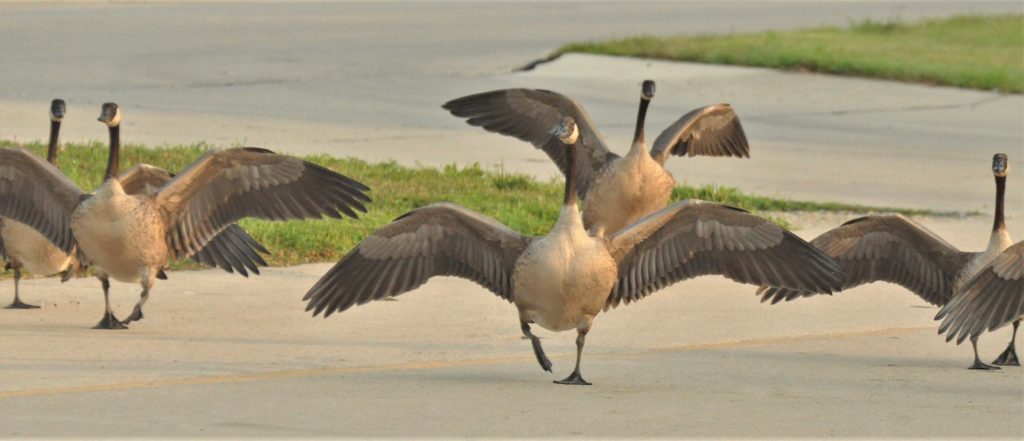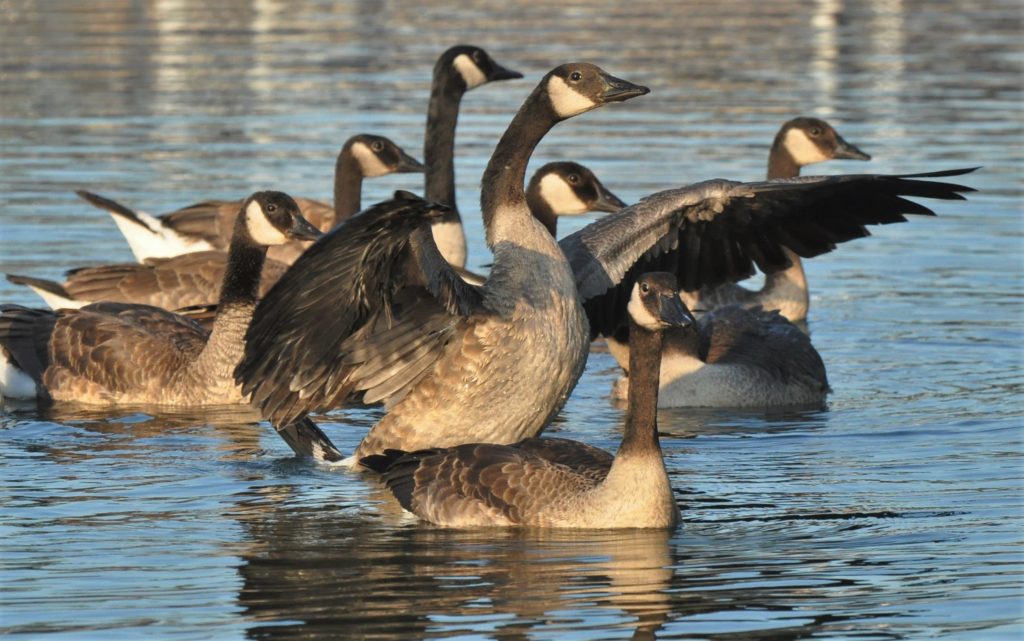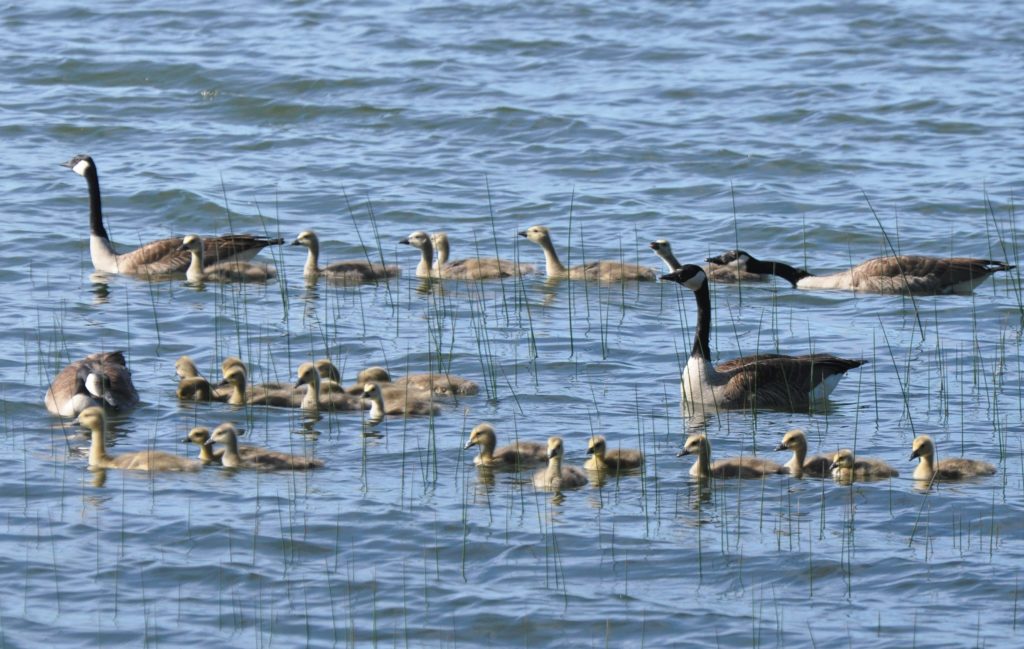Photography courtesy of Lowell Washburn, all rights reserved.
The Iowa skies are getting louder. This year’s crop of Canada geese are testing their wings. The gosling’s initial flights are entertaining — often humorous — endeavors. Facing into the breeze, the flights begin with an awkward, wing flapping, running start. Like an airplane taxiing down the runway, the speed gradually increases until the goslings are suddenly airborne. Many appear surprised that it’s really happening — “I can fly!”

A goose’s first flights are teetering, clumsy, and short lived. Most last for less than 50 yards; terminating with an ill planned crash landing. Undaunted, the youngsters celebrate the event with cooperative neck stretching, more wing flapping, and wheezy adolescent honking. But practice makes perfect. Give them another week or two on the wing, and the flights will go for hundreds of yards; sometimes for miles. By the time autumn winds chill the landscape, this year’s youngsters will be ready to accompany their parents on their first southbound migration.

Final thought: In spite of a late snow melt followed by a cool, wet spring; statewide goose production appears to have been excellent during 2019. In northcentral and northwestern Iowa’s “Marsh Country”, spring goose broods were everywhere. Giant Canada geese are devoted parents and goslings enjoyed phenomenal survival – even in gang broods containing twenty or more young. The dramatic restoration of Iowa goose flocks remains one of our most remarkable, and recreationally important, conservation achievements.
LW


 Tom Cope
Tom Cope Sue Wilkinson
Sue Wilkinson Susan Judkins Josten
Susan Judkins Josten Rudi Roeslein
Rudi Roeslein Elyssa McFarland
Elyssa McFarland Mark Langgin
Mark Langgin Adam Janke
Adam Janke Joe Henry
Joe Henry Kristin Ashenbrenner
Kristin Ashenbrenner Joe Wilkinson
Joe Wilkinson Dr. Tammy Mildenstein
Dr. Tammy Mildenstein Sean McMahon
Sean McMahon